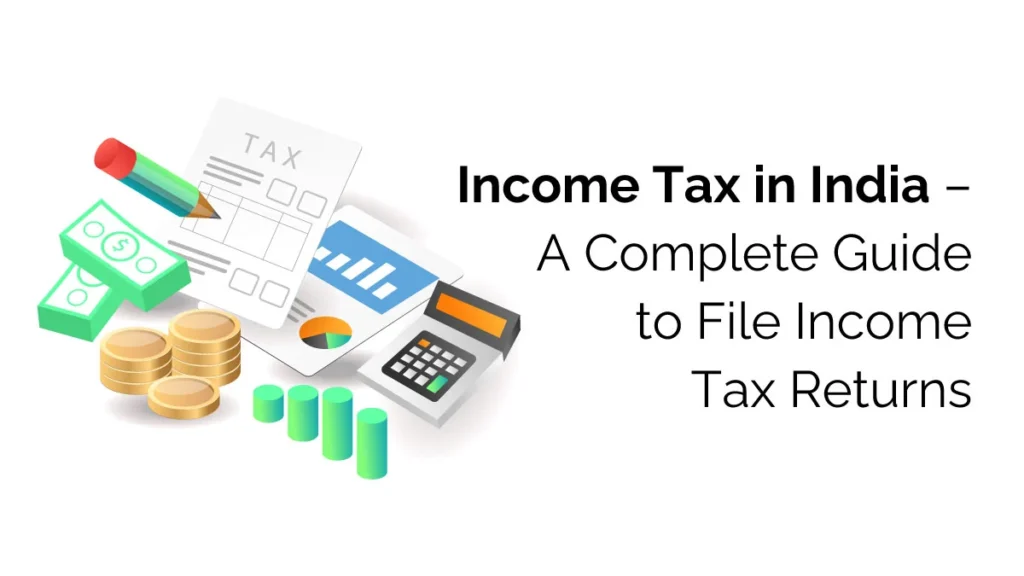
Introduction
Guide to Filing Income Tax for Individuals:
Filing your income tax return (ITR) is a legal responsibility and an essential step in managing your finances. With constant updates in tax laws, it’s important to stay informed and compliant. If you’re an individual taxpayer in India, the 2025 income tax filing season brings new deadlines, updated ITR forms, and revised tax slabs.
At CA Nexus Nashik, we specialize in simplifying the tax filing journey for individuals like you. This essential guide to filing income tax for individuals will help you stay compliant, avoid common pitfalls, and maximize your tax benefits in the financial year 2024–25.
1. Know the Income Tax Filing Due Dates for 2025
The first step in any Guide to Filing Income Tax for Individuals is understanding the deadlines:
-
31st July 2025: Last date for salaried individuals and HUFs (who don’t require audit).
-
31st October 2025: Due date for businesses requiring an audit.
-
30th November 2025: For taxpayers requiring a transfer pricing report.
✅ Pro Tip: File early to avoid last-minute stress and interest under Section 234A.
2. Determine Your Applicable ITR Form
Every proper Guide to Filing Income Tax for Individuals must help you choose the correct ITR form:
-
ITR-1 (Sahaj): For salaried individuals with income up to ₹50 lakh.
-
ITR-2: For individuals with capital gains or income from more than one property.
-
ITR-3: For individuals earning from business or profession.
-
ITR-4 (Sugam): For presumptive income from business/profession under Section 44AD, 44ADA, or 44AE.
Don’t know which form applies to you? CA Nexus Nashik can help you choose the correct one.
3. Choose Between New and Old Tax Regimes
As part of this Guide to Filing Income Tax for Individuals, it’s important to compare:
Old Regime:
-
Allows deductions (80C, 80D, HRA, etc.)
-
Suitable for those claiming multiple exemptions
New Regime (FY 2024–25):
-
Lower tax rates
-
No deductions (except NPS, EPF, and standard deduction of ₹50,000)
🧮 Use our tax calculator or book a consultation to decide the right regime for you.
4. Gather Required Documents
Here’s what you’ll typically need to file your ITR:
-
Form 16 from employer
-
PAN & Aadhaar Card
-
Bank account details
-
Investment proofs (LIC, ELSS, PPF, etc.)
-
TDS certificates (Form 16A)
-
Form 26AS and Annual Information Statement (AIS)
-
Capital gains statements from mutual funds, stocks, or real estate
-
Rent receipts, if claiming HRA
This Guide to Filing Income Tax for Individuals also recommends storing these for at least 6 years for audit safety.
5. Report All Income Sources
Transparency is critical in your guide to filing income tax for individuals. Ensure you disclose:
-
Salary
-
House property
-
Capital gains
-
Business or freelance income
-
Interest on savings or FDs
-
Dividends
-
Cryptocurrency gains (taxable at 30%)
Not reporting all income may lead to notices or penalties.
6. Claim Deductions & Tax Benefits
Maximize your refund or reduce your liability by claiming applicable deductions:
-
Section 80C: Investments in LIC, EPF, ELSS, etc. (Limit ₹1.5 lakh)
-
Section 80D: Health insurance premiums
-
Section 24(b): Home loan interest
-
Section 80G: Donations to eligible charities
-
NPS contributions: Additional ₹50,000 under Section 80CCD(1B)
With CA Nexus Nashik’s help, our Guide to Filing Income Tax for Individuals ensures you don’t miss out on any eligible deductions.
7. Verify and Submit Your ITR
Once you fill your return on the Income Tax e-filing portal, don’t forget to verify it. Without verification, your return is not valid.
You can e-verify via:
-
Aadhaar OTP
-
Net banking
-
Demat account
-
Bank account
-
Sending signed ITR-V to CPC Bangalore (within 30 days)
Without verification, the return is invalid—make sure to complete this crucial step in our Guide to Filing Income Tax for Individuals.
8. Keep Acknowledgment and Records
After successful filing and verification, download your ITR-V and save the acknowledgment for your records. Keep all related documents for at least 6 years, in case the IT department seeks clarification in the future.
This last step in our Guide to Filing Income Tax for Individuals ensures you’re audit-ready and organized.
Final Thoughts
Filing your income tax return correctly can help you avoid penalties, get timely refunds, and maintain a strong financial record. With changing tax rules in 2025, it’s important to stay updated and seek professional help when needed.
At CA Nexus Nashik, we offer end-to-end ITR filing services for salaried individuals, freelancers, and small business owners. From tax planning to document filing and e-verification—we make the process hassle-free for you.
📞 Need Help Filing Your Tax Return?
Let the experts at CA Nexus Nashik handle it for you.
📧 Email: info@canexusnashik.com
📞 Phone: +91 9860400651
🌐 Visit our website
External DoFollow Resources
Enhance your tax filing experience with these official resources:
- Income Tax e-Filing Portal
Access the official portal to file your Income Tax Return (ITR), download forms, and check refund status.
🔗 https://www.incometax.gov.in/iec/foportal/ - Form 26AS – Tax Credit Statement (TRACES)
View your tax credit details, including TDS, TCS, and advance tax payments.
🔗 https://www.tdscpc.gov.in/ - Annual Information Statement (AIS)
Review your comprehensive financial information for the financial year.
🔗 https://www.incometax.gov.in/iec/foportal/ais-faq - Income Tax Calculator – Official Tool
Calculate your tax liability under both old and new tax regimes.
🔗 https://www.incometax.gov.in/iec/foportal/income-tax-calculator - CBDT Circulars & Notifications
Stay updated with the latest circulars and notifications from the Central Board of Direct Taxes.
🔗 https://incometaxindia.gov.in/pages/communications/index.aspx